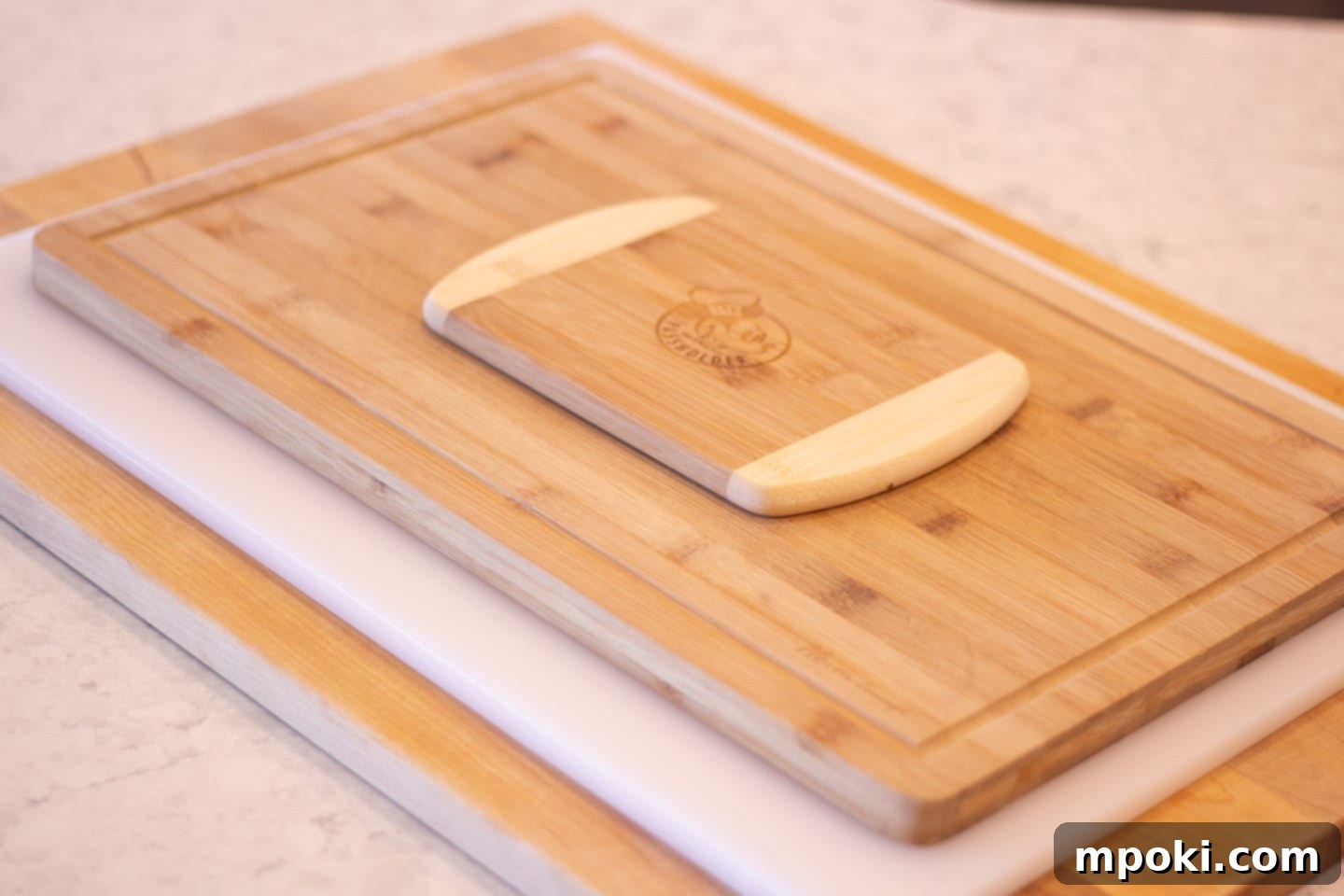Wood vs. Plastic Cutting Boards: Crafting the Perfect System for Your Kitchen
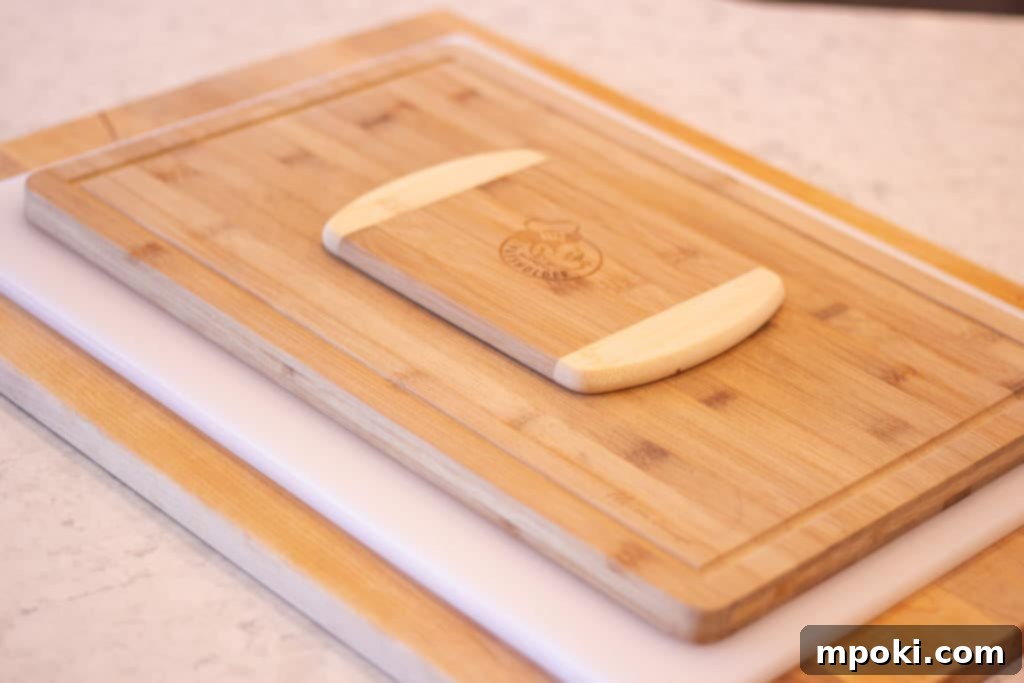
Every home chef knows that a good cutting board is the unsung hero of the kitchen. From dicing vegetables to carving a holiday roast, your cutting surface plays a crucial role in both food preparation and safety. But with countless options available, the perennial question arises: which is better, wood or plastic? And how do you choose the right board for the right task?
This comprehensive guide will demystify the world of cutting boards, offering insights into their various types, uses, and essential care. We’ll delve into a practical “cutting board system” designed to enhance your culinary efficiency, prolong the life of your knives, and — most importantly — keep your kitchen hygienic and safe. Get ready to transform your prep work with the perfect cutting board strategy!
This Page Contains Affiliate Links. For more Information See My Disclosures here.
Understanding Your Cutting Board System
Instead of relying on a single all-purpose board, a thoughtful “cutting board system” involves using different boards tailored to specific needs. This approach isn’t just about convenience; it’s a cornerstone of food safety and culinary efficiency. By categorizing your boards, you minimize the risk of cross-contamination, extend the lifespan of your kitchen tools, and ensure every task is tackled with the right equipment.
Discover the philosophy behind a multi-board approach and how to implement it effectively in your own kitchen:
A well-curated system typically revolves around at least three primary cutting boards, each with a distinct role. Let’s explore the essential components of such a system, focusing on the ideal choices for various culinary tasks.
The Indispensable Wood Cutting Board: Your Everyday Workhorse

For the majority of your daily chopping, slicing, and dicing, a high-quality wood cutting board stands supreme. These boards are not only aesthetically pleasing but also offer significant practical advantages that make them a favorite among professional chefs and home cooks alike. The specific example here, a Bamboo Board with a Drip Groove, is an excellent choice for its versatility, especially when carving cooked meats, as the groove efficiently collects juices, keeping your countertop clean.
Why Choose Wood? Benefits of Wooden Cutting Boards
- Knife-Friendly Surface: One of the most significant benefits of wood cutting boards is their relative softness compared to plastic. The natural fibers of wood “give” slightly as your knife blade passes through, protecting the delicate edge and keeping your knives sharper for longer. This means less frequent sharpening and a more enjoyable cutting experience.
- Natural Antimicrobial Properties: Many types of wood, particularly dense hardwoods like maple, walnut, and cherry, possess natural antimicrobial properties. Studies have shown that bacteria tend to die off faster on wooden surfaces than on plastic ones, provided the board is properly cleaned and maintained.
- Durability and Longevity: With proper care, a good quality wooden cutting board can last for decades, becoming a cherished heirloom in your kitchen. They are robust, stable, and less prone to warping or cracking than some other materials when treated correctly.
- Aesthetics: Wood boards add a touch of warmth and elegance to any kitchen. They can double as beautiful serving platters for cheeses, charcuterie, or appetizers, making them a versatile tool beyond just prep work.
- Stability: Wood boards, especially heavier ones, tend to stay put on the counter, providing a stable and safe surface for cutting, reducing the risk of accidents.
Best Uses for Your Wooden Cutting Board
Your primary wood board is ideal for:
- Cooked Meats: The drip groove on many wooden boards makes them perfect for carving roasted chicken, turkey, beef, or pork, catching all the delicious juices.
- Vegetables and Fruits: From hearty root vegetables to delicate herbs, wood provides a stable and safe surface for all your produce prep.
- Bread and Pastries: The firm surface is excellent for slicing fresh bread or working with doughs that require a solid base.
- General Prep: Any task that doesn’t involve raw animal products is a perfect fit for your wooden cutting board.
Maintaining Your Wood Cutting Board
To ensure your wood board remains a cherished kitchen tool, proper care is essential:
- Hand Wash Only: Never put a wooden cutting board in the dishwasher. The intense heat and prolonged exposure to water can cause it to warp, crack, or split. Wash immediately after use with warm, soapy water, rinse thoroughly, and dry completely with a towel before allowing it to air dry upright.
- Oil Regularly: To prevent drying and cracking, and to maintain its natural beauty, oil your wood board regularly (every few weeks or months, depending on usage) with food-grade mineral oil or a specialized board cream. This also helps create a barrier against moisture and bacteria.
- Sanitize Naturally: For extra sanitation, you can occasionally wipe the board with a mixture of white vinegar and water, or a cut lemon rubbed with salt.
Why Wood Boards Are Not Recommended for Raw Meats
While wood offers many advantages, it’s generally not recommended for handling raw meats, poultry, or fish. The porous nature of wood means that microscopic cuts and grooves can trap bacteria from raw proteins. Unlike plastic boards, wooden boards cannot be sanitized in a dishwasher at high temperatures, making it challenging to ensure all bacteria, particularly harmful pathogens like Salmonella or E. coli, are completely eliminated. This significantly increases the risk of cross-contamination, a primary concern in food safety.
The Essential Plastic Cutting Board: Your Raw Meat Specialist
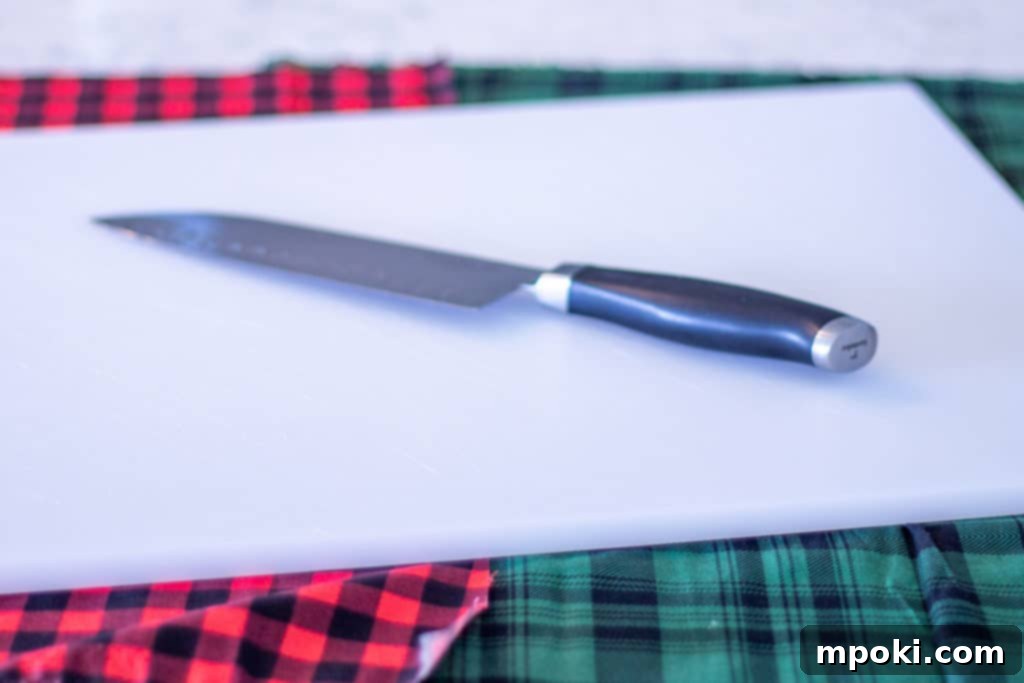
When it comes to handling raw meats, poultry, and seafood, a dedicated plastic cutting board is not just a preference, but a vital component of a safe kitchen. Boards like this semi-hard plastic board, often found in professional kitchens, are specifically chosen for their ability to withstand rigorous sanitization.
Why Plastic is Perfect for Raw Proteins
- Dishwasher Safe: The primary advantage of plastic cutting boards for raw meats is their ability to be thoroughly sanitized in a dishwasher. The high temperatures and strong detergents effectively kill bacteria and wash away food particles trapped in knife marks, significantly reducing the risk of foodborne illness.
- Non-Porous Surface: Unlike wood, most plastic cutting boards are non-porous. This means they don’t absorb liquids or bacteria, making them easier to clean and less likely to harbor pathogens.
- Color-Coding for Safety: In commercial kitchens, plastic boards are often color-coded (e.g., red for raw meat, blue for raw fish, green for vegetables). While not strictly necessary for home use, dedicating a single color or specific board solely for raw ingredients is an excellent practice to prevent cross-contamination.
- Lightweight and Easy to Handle: Many plastic boards are lighter than their wooden counterparts, making them easy to move, wash, and store.
Preventing Cross-Contamination: A Critical Safety Measure
Cross-contamination occurs when harmful bacteria from raw foods (like meat juices) are transferred to ready-to-eat foods (like salad ingredients) via unwashed hands, utensils, or cutting boards. Using a separate, easily sanitizable plastic board exclusively for raw meats is the most effective way to prevent this common kitchen hazard. By segregating your prep surfaces, you dramatically reduce the chances of inadvertently making yourself or your family sick. This simple practice reflects a commitment to responsible and safe food preparation.
Drawbacks and When to Replace Your Plastic Board
While excellent for raw meats, plastic boards do have some downsides:
- Dulls Knives Faster: Plastic is generally harder than wood, which can cause knife edges to dull more quickly over time.
- Wears Out Over Time: Plastic boards tend to accumulate deep knife grooves over time. Once these grooves become significant and difficult to clean, they can harbor bacteria even after dishwashing. When your plastic board shows excessive wear, it’s time to replace it.
- Less Aesthetically Pleasing: Plastic boards often lack the visual appeal of natural wood.
The Large Cutting Board: Your Hub for Baking and Big Projects
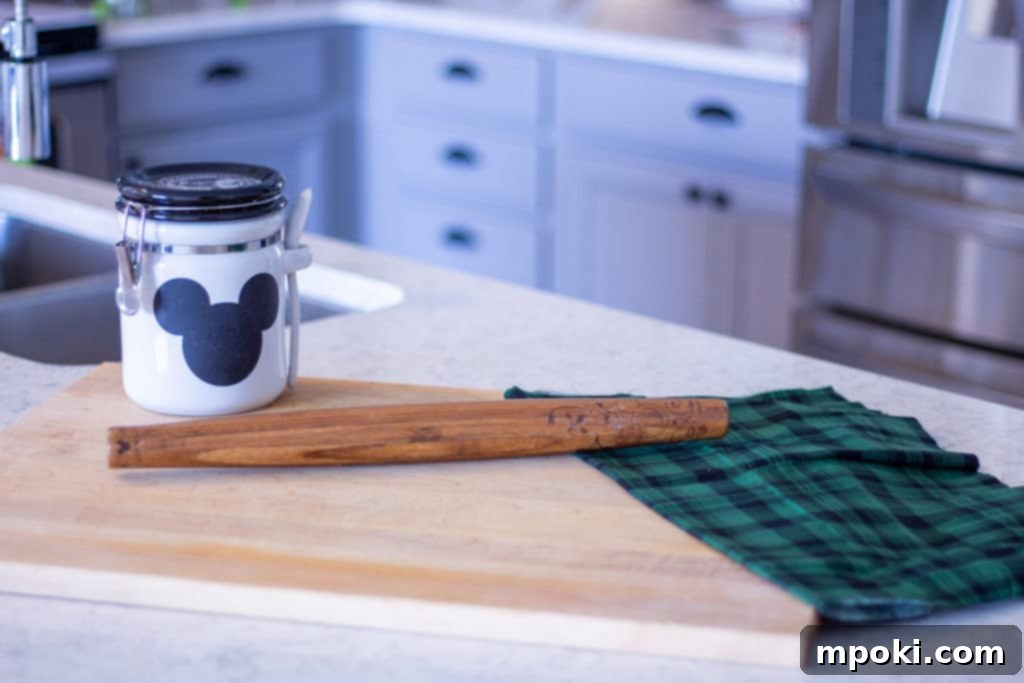
Beyond daily chopping, certain culinary tasks demand a significantly larger working surface. This is where a substantial, often wooden, cutting board truly shines. Passed down through generations or newly acquired, a large board like this one (which has been in use for over 20 years!) offers unparalleled versatility and ample space for ambitious kitchen projects.
Why a Large Board is a Game Changer
- Baking and Dough Work: Rolling out pizza dough, kneading bread, shaping pastries, or cutting cookies often requires a wide, flat, and stable surface. While you can use your countertop, a dedicated large board provides a cleaner, more controlled environment. It keeps flour contained and offers a consistent surface that might be preferable to a cold stone or laminate counter.
- Large-Scale Meal Prep: When you’re preparing a big meal, hosting a dinner party, or batch cooking for the week, you often have multiple ingredients that need chopping. A large board allows you to keep everything organized and separate, preventing your workspace from becoming cluttered and inefficient.
- Carving Large Roasts: For a holiday turkey, a substantial prime rib, or a large ham, you need a board that can accommodate the entire piece of meat, along with plenty of space for carving and collecting juices. A large wooden board, especially one with a well-defined juice groove, is indispensable here.
- Protection for Countertops: Even if your countertops are durable, using a large cutting board provides an extra layer of protection against scratches, stains, or heat from hot pans (though direct heat should generally be avoided on wood).
Choosing and Caring for Your Large Board
For large boards, wood is often the material of choice due to its stability, aesthetics, and knife-friendliness. Consider a large cutting board made from durable hardwood like maple or walnut for best results. The care routine for a large wooden board is the same as for your primary wood board: hand wash, dry immediately, and oil regularly. Due to its size, storage might be a consideration – vertical storage in a pantry or leaning against a wall can be practical.
The Handy Small Cutting Board: For Quick Tasks and Convenience
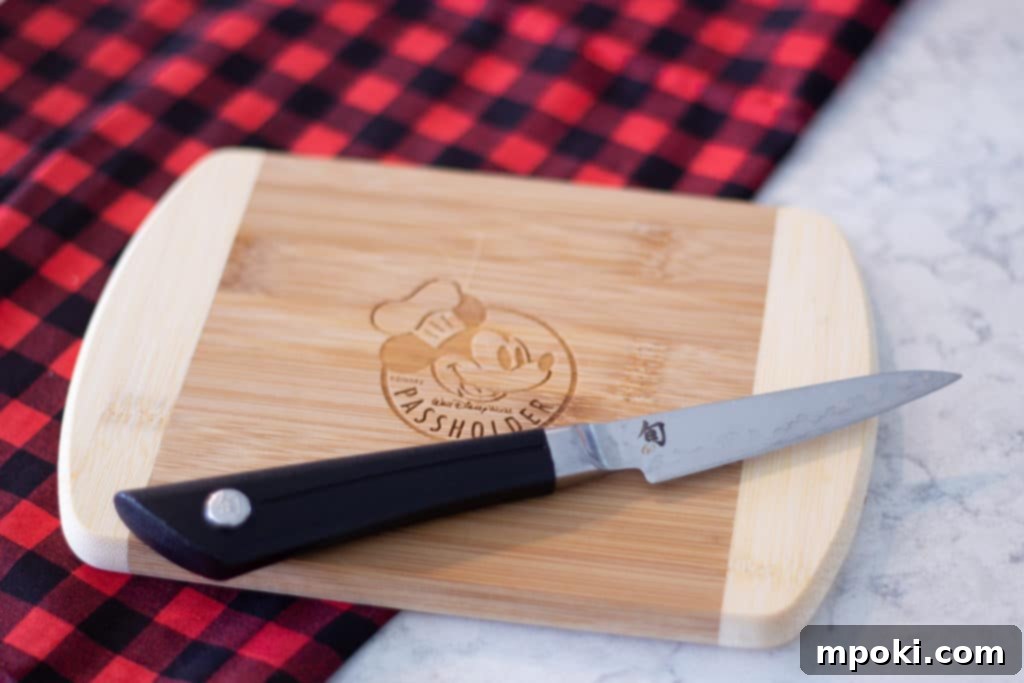
While not strictly mandatory for a functional kitchen, a small, auxiliary cutting board quickly becomes an indispensable tool for efficiency and convenience. Think of it as your kitchen’s equivalent of a pocket knife – small, nimble, and always ready for those quick, minor tasks that don’t warrant pulling out a larger board.
The Power of “Optional” Convenience
This “cheese” or fruit board, perhaps adorned with a fun design like the Mickey logo, is perfect for:
- Cutting a Single Fruit: Need a slice of apple for a snack, a wedge of lemon for a drink, or a few strawberries for your yogurt? A small board saves you the hassle of cleaning a large surface for such minimal effort.
- Slicing Cheese: As its nickname suggests, it’s ideal for slicing a block of cheese for a sandwich or a small snack platter.
- Minced Herbs or Garlic: When you only need a small amount of herbs or a couple of cloves of garlic, this board is perfectly sized.
- Quick Sandwich Prep: Slicing tomatoes, lettuce, or other sandwich fixings without dirtying a larger board.
Its small size means it’s incredibly easy to wash, dry, and put away, encouraging you to use it rather than improvising on a less sanitary surface. This board can be made of wood, bamboo, or even a smaller, flexible plastic, depending on your preference and what you’re cutting. Just remember to still follow basic hygiene rules – if you cut something like a hard-boiled egg or cooked chicken on it, clean it thoroughly before cutting raw fruit.
Mastering Kitchen Safety: Stopping Cutting Boards from Moving
You’ve chosen the right cutting boards for the job, but there’s one critical step remaining to ensure maximum safety and efficiency: preventing them from slipping and sliding on your countertop. A wobbly cutting board isn’t just annoying; it’s a significant safety hazard that can lead to cuts and accidents. Fortunately, this common kitchen frustration has a simple, effective solution.
The “Dad Hack” for a Stable Cutting Surface
The secret to a stable cutting board lies in creating friction between the board and the countertop. The simplest and most effective method is to place a damp cloth, a silicone mat, or even a few pieces of damp paper towel underneath your cutting board. The slight dampness and texture of the cloth or mat create enough grip to prevent the board from shifting, even during vigorous chopping. This small adjustment makes a world of difference in your kitchen safety and comfort.
By implementing this easy “Dad Hack,” you create a secure workstation, allowing you to focus on your cutting technique without worrying about the board unexpectedly moving. It’s a fundamental principle of kitchen safety that often gets overlooked but is crucial for anyone handling sharp knives.
Click Here to Learn More about Preventing Cutting Board Movement
Empower Your Culinary Journey: Go Cook Something!
Armed with a deeper understanding of cutting boards and a strategic system for their use, you’re now better equipped to tackle any recipe with confidence and safety. Investing in the right tools and knowing how to use and care for them is a hallmark of an effective home chef.
Remember, your kitchen is your creative space. A well-organized and safe environment allows you to experiment, learn, and enjoy the process of cooking. So, take these insights, set up your cutting board system, and embark on your next culinary adventure!
Ready for more kitchen tips and cooking inspiration? Don’t forget to check out Dad’s YouTube Channel for videos, recipes, and more practical advice to make your time in the kitchen enjoyable and productive.
